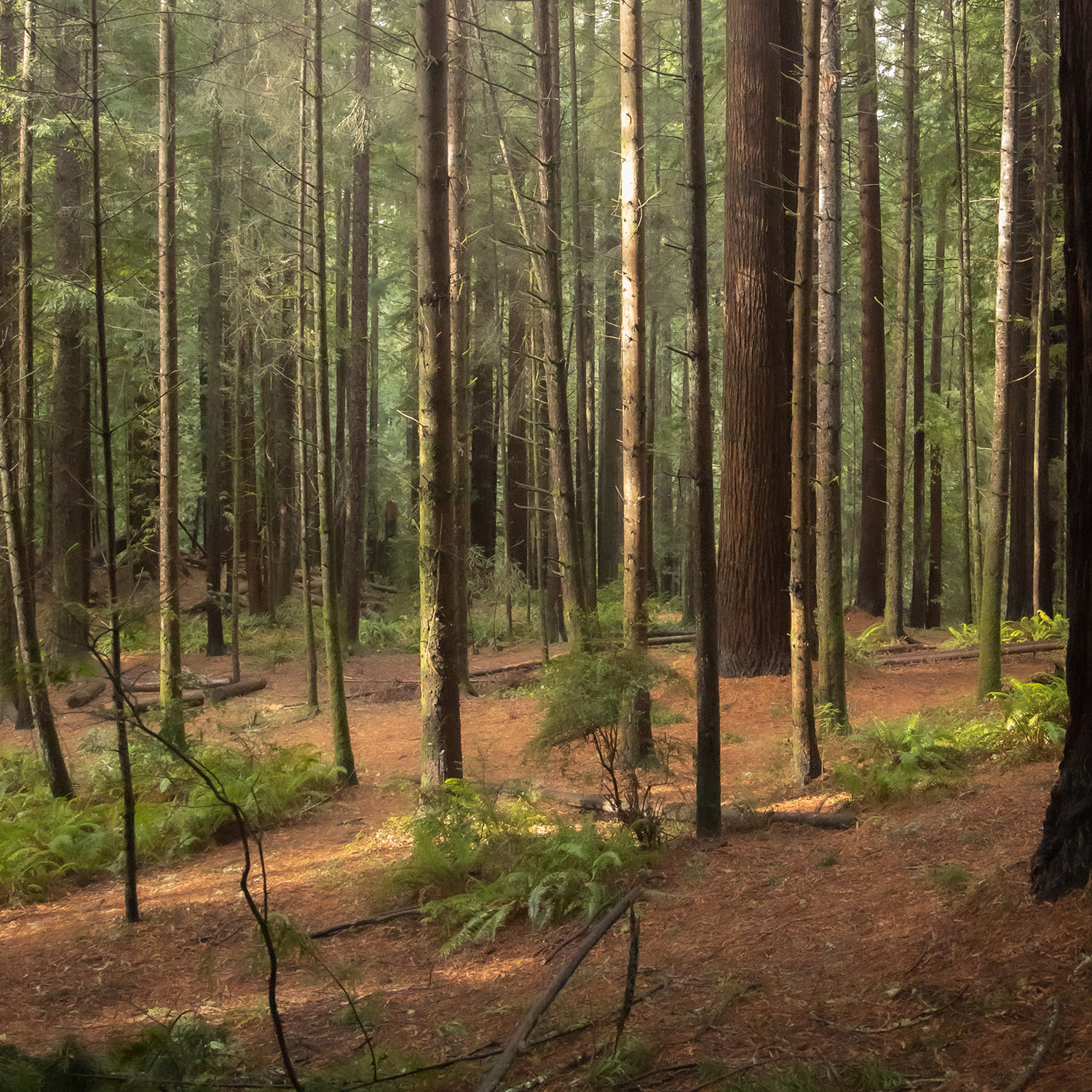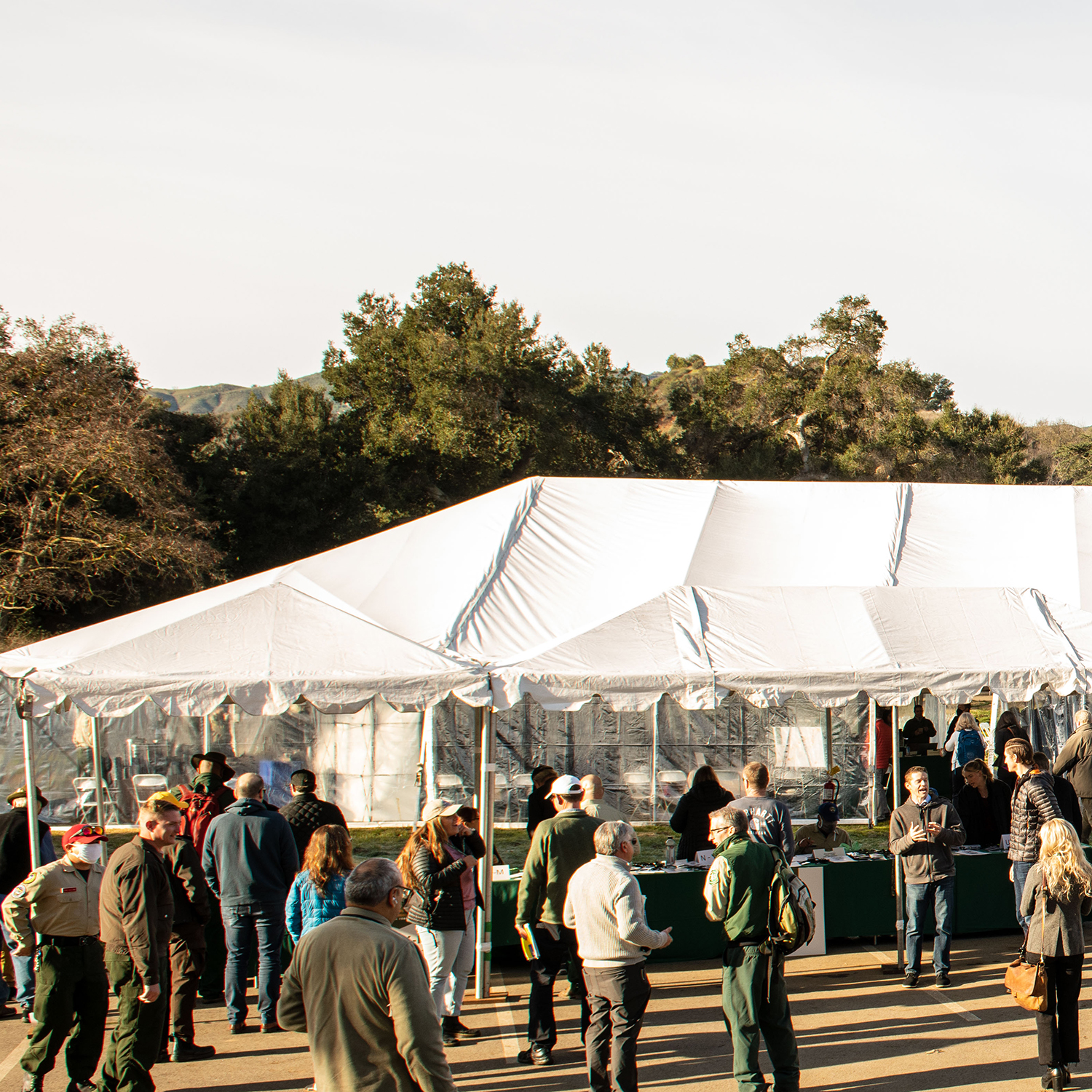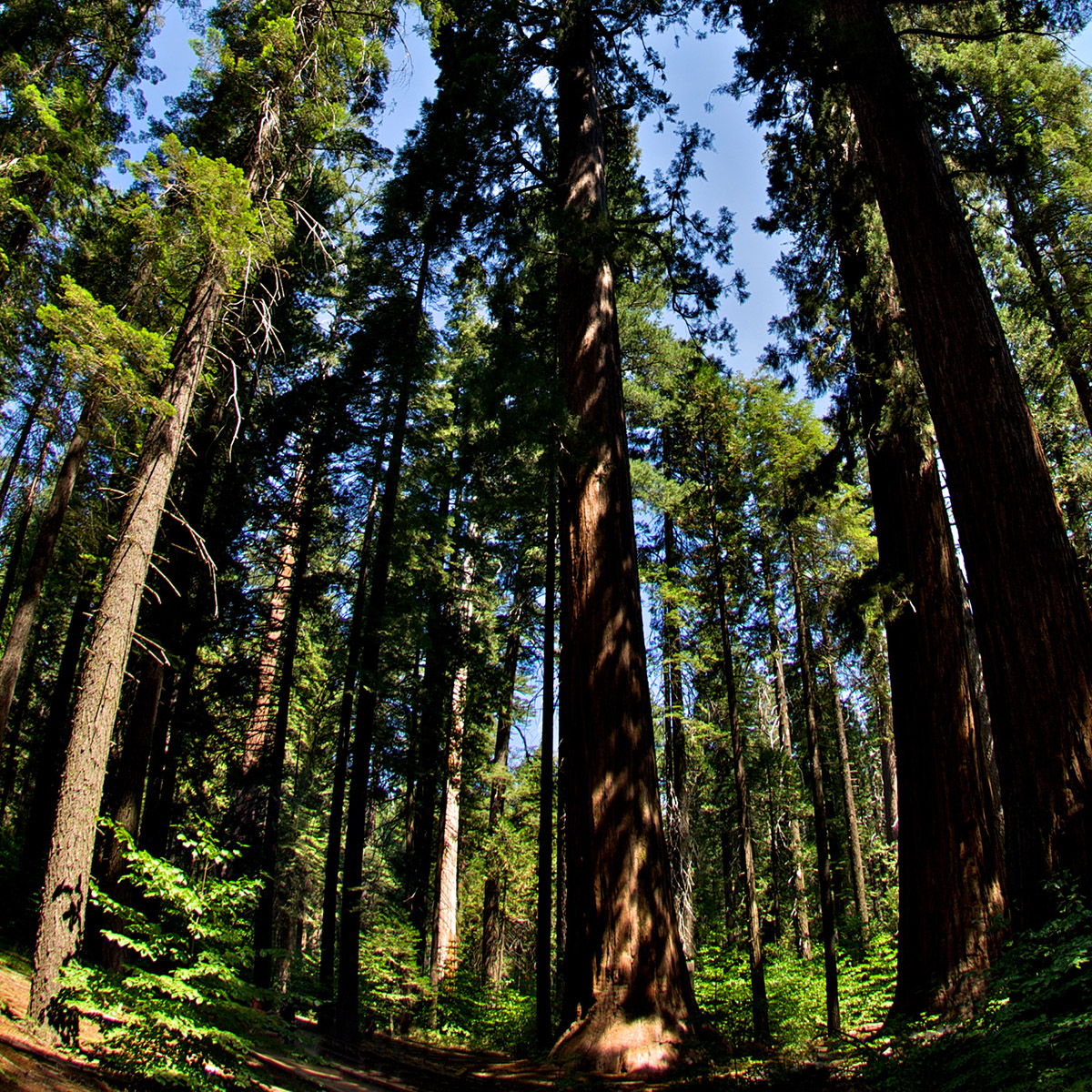Project Implementation in High-Risk Regions – Tahoe
Project Implementation in High-Risk Regions – Tahoe
Department: Tahoe Conservancy
Program Description: The Tahoe Conservancy is reducing wildfire risk to Tahoe communities and improving forest resilience. This work includes reducing flammable vegetation in the forests near homes, neighborhoods, and communities. It also includes managing forest vegetation and restoring meadows and streams to improve forest health and habitat so that these ecosystems are more resilient to insects, disease, wildfire, drought, and climate change. To get all this important work done the Tahoe Conservancy is building capacity by creating new jobs and training programs, using smart technology, and creating efficient government processes.

Aerial photo of south Lake Tahoe forested community.
Program Impact: Wildfire and forest resilience funding is helping the Tahoe Conservancy and its partners make progress towards the goals within the Lake Tahoe Basin Forest Action Plan. This includes completing and maintaining 25,000 acres of Tahoe’s wildland-urban interface treatments by 2025, with approximately 11,000 acres remaining to reach this goal. The Tahoe Conservancy is also working closely with partners to fund strategic priorities, increase capacity, and improve technologies and science through various partnerships including the Tahoe-Central Sierra Initiative.
The Tahoe Conservancy aims to complete initial treatments on all 5,500 acres of its forested ownership by 2025 and has committed $6.5 million in wildfire funding so far towards this goal. The Tahoe Conservancy is also working with other State and local partners to complete priority work on other publicly owned properties, consistent with the Lake Tahoe Basin Forest Action Plan.
The Tahoe Conservancy has entered into several funding agreements for a total of $5.35 million for work on federal lands. This includes hazard tree removal and emergency fuel hazard reduction work on 1,500 acres of federally owned property adjacent to roads and trails in the Lake Tahoe Basin portion of the Caldor fire footprint. It also includes funding for 70 acres of treatments on federal lands in cross-jurisdictional community protection projects under the Conservancy’s Good Neighbor Agreement with the USDA Forest Service, Lake Tahoe Basin Management Unit. Tahoe Conservancy staff are working with USDA Forest Service staff to incorporate federal land into future planned community protection projects to achieve more comprehensive and beneficial projects.
The Department of Conservation provided additional funding to the Tahoe Conservancy from the Regional Forest and Fire Capacity Program to increase capacity to treat forests and reduce hazardous fuels throughout the Basin. These funds are supporting multiple projects, including the Basin Community Wildfire Protection Plan update, which will collaboratively develop a priority project list for future work. The Tahoe Conservancy also provided a grant to the Washoe Tribe of Nevada and California to increase their capacity and complete culturally significant projects.

Forestry aides with the Tahoe Conservancy identifying project boundaries for future forestry treatment project in support of the Lake Tahoe Basin Forest Action Plan.

California Conservation Corps members conducting fuel reduction work on USDA Forest Service property.
Resilience in Action: Firefighters successfully defended Lake Tahoe neighborhoods from the Caldor Fire, without a single home lost in the Lake Tahoe Basin. Firefighters attributed previously completed wildland-urban interface treatments as a major contributor to their success. Wildfire and forest resilience funding is being used by the Conservancy to continue this work throughout other areas in Tahoe so that all neighborhoods and communities have the best odds of survival, no matter where a fire starts.
RESOURCES
Program Traditional and Social Media:
- Video: Managing open space, reducing wildfire risk, protecting Lake Tahoe – YouTube
- News Article: Tahoe Conservancy grants $305,000 to Washoe Tribe to improve forest, watershed, and wildfire resilience | South Lake Tahoe – SouthTahoeNow.com
- Tahoe Conservancy on Instagram: “The California Tahoe Conservancy is awarding a $406,500 grant to the Tahoe Resource Conservation District to update critical plans to…”
- Tahoe Conservancy Facebook account
- Tahoe Conservancy Twitter Account
Project Implementation in High-Risk Regions – Sierra Nevada
Project Implementation in High-Risk Regions – Sierra Nevada
Department: Sierra Nevada Conservancy
Program Description: The Sierra Nevada Conservancy’s (SNC) Watershed Improvement Program (WIP) stewards the 27-million-acre Sierra-Cascade region that contains 44 percent of the state’s overall elevated or extreme fire risk. The Sierra-Cascade region sources 80 percent of California’s water and more than 72 percent of the region is in a high-risk fire zone.
Effective at using science-based management and building community coalitions, the SNC’s WIP supports efforts to restore resilience to the forested landscapes and communities of the Sierra-Cascade.
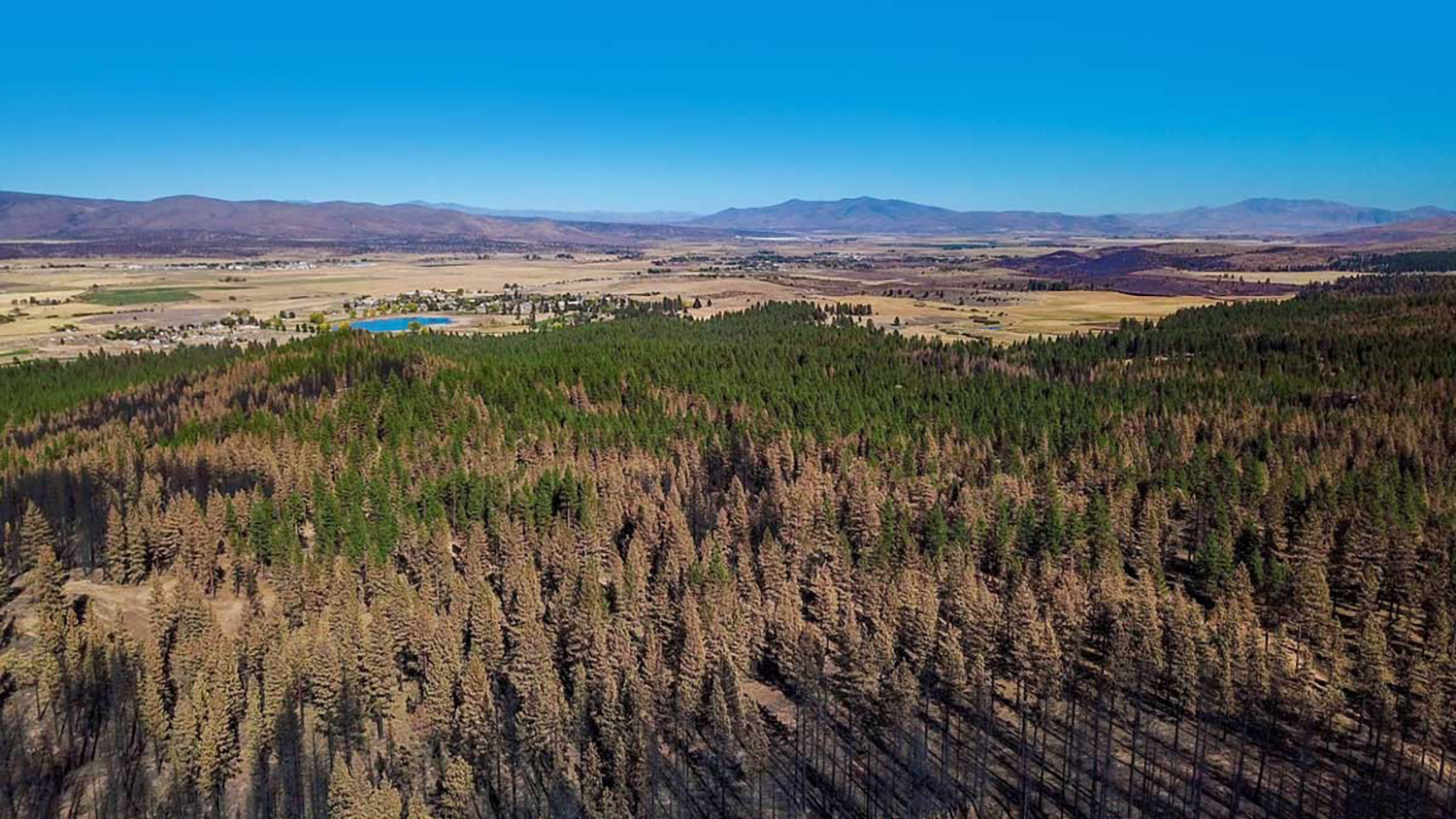
The burn severity of the 2020 Sheep Fire decreased as it burned into areas where the SNC, and others, funded Lassen Fire Safe Council forest-health treatments, helping to protect the city of Susanville. Creating shaded-fuel breaks in the wildland-urban interface that benefit both community and forest resilience is an example of the kind of multi-benefit projects prioritized by SNC’s WIP.

The forest floor near a Quincy, CA neighborhood is marked by only mild fire effects, like burnt grasses and lightly charred tree trunks, two months after the deadly 2020 North Complex Fire. The area was treated under an SNC WIP grant that helped to create a 2.5-mile-long buffer of fire-resilient forests along Quincy-La Porte Rd. Fire suppression officials credited this buffer for the successful defense of all homes in the area.

A portion of the 2022 Oak Fire footprint. The green trees in the foreground are on the ranch of a private landowner with a long history of active management, including the SNC-funded Clarks Valley Wildfire Reduction Project. Elsewhere, the Mariposa County fire burned almost 20,000 acres in mostly damaging ways—destroying more than 200 structures and leaving high-severity impacts across nearly 60 percent of its footprint.
Watershed Improvement Program grants have proven their value in reducing wildfire risk in recent fire seasons. SNC-funded projects helped to protect Susanville from the 2020 Sheep Fire, the town of Quincy from the North Complex Fire, and Lassen National Park facilities from the 2021 Dixie Fire. These grants also had beneficial impacts during the 2021 Caldor Fire where SNC had supported a prescribed burn in the Caples watershed several years prior which helped save that forest when the Caldor Fire swept through. Grants also supported the Fire Adapted 50 project that protected communities like Sly Park and Pollock Pines during the Caldor Fire.
The SNC’s current Wildfire Recovery and Forest Resilience Grant Program prioritizes the planning and implementation of forest health projects in high-risk regions to create more resilient landscapes, reduce wildfire risk, and accelerate recovery from recent wildfires.
Program Impact: Over the past two years the SNC has approved more than $36 million in grants for wildfire recovery and forest resilience projects. The 33 projects funded will complete wildfire resilience treatments on nearly 18,000 acres, replant more than 9,000 acres damaged by recent wildfires, and create thousands of acres of shovel-ready projects through fuel-reduction planning and prioritization efforts that will be conducted on approximately 565,000 acres across the Sierra-Cascade region.
The SNC opened a second $36 million round of wildfire recovery and forest resilience grants in June 2022. In response, SNC received approximately $89.5 million in project proposals. The SNC has completed its review of proposals and is moving forward with recommendations to award all remaining funds by June 2023.
Resilience in Action: The $20 million in 2021 Early Action funding provided to the SNC was distributed within three months of receipt to 15 shovel-ready wildfire resilience projects. Two of those projects are complete and are already protecting communities, watersheds and a hospital in the Sierra-Cascade region. Work is well underway on others, including projects that were impacted by the record-shattering 2021 wildfire season. Some, like the Thompson Peak Initiative-Bootsole Project in the Plumas National Forest, have been able to adapt treatment plans to take advantage of areas that did not burn at damaging high severity to build resilience.

Strategically located on a ridge separating the Merced River and Tuolumne River watersheds, the Wagner Ridge Fuel Break Project(video) expanded and widened a shaded fuel break to 400 feet. The fuel break will help with future firefighting efforts to keep a fire from crossing from one critical watershed to the other. The Wagner Ridge Fuel Break Project was funded in July 2021 with Early Action funding and was completed in Fall 2022.

Adjacent to homes and critical town infrastructure, including the Plumas District Hospital, the Quincy Wildfire Protection Project (video) should live up to its name by helping to protect people and property from wildfire. The rural hospital is located in the wildland urban interface in a very high fire severity zone and provides essential services to disadvantaged communities in the Sierra-Cascade region. The July 2021 grant was funded with Early Action budget funds and work on the ground was completed in Fall 2022.
California Forest Improvement Program for Small Landowners
California Forest Improvement Program for Small Landowners
Department: CAL FIRE
Program Description: Forty percent of forest land in California is privately owned. And small non-industrial forest landowners represent 26 percent of the forest landownership in California. If neglected these patchwork plots of land, ranging from 20 acres to one thousand acres, could exacerbate a wildfire. The California Forest Improvement Program (CFIP) provides small landowners with technical and financial assistance for planning, reforestation, and resource management investments that improve the health and resilience of forestland since its establishment in 1978. This helps create a more contiguous healthy, wildfire-ready forest regardless of land ownership.
Program Impact: In the last two years, this program has:
- Entered into 108 grant agreements with small, non-industrial private forestland owners.
- Restored 5,700 acres of forestland.
Resilience in Action: The CFIP program recently adopted an Emergency Forest Management Plan (EFMP), a more streamlined approach to reforesting lands devastated by catastrophic wildfire. This program helped restore small family-owned forestlands after the Creek Fire near shaver lake and the Antelope Fire in Siskiyou County.

Overstory of fire resilient pine trees with an understory of highly invasive Scotch broom a species very prone to fire.

A portion of the property post-treatment.
Tribal Engagement
Tribal Engagement
Department: CAL FIRE
Program Description: Tribes play a crucial role in managing forest land. The Governor’s Wildfire Resilience budget provided $40 million in funding for California Native American tribal governments to support tribal-led wildfire resilience efforts. The funds will support Tribes in managing tribal land holdings, implement and promote tribal ecological knowledge in wildfire resilience, and establish wildfire safety for tribal communities. The goal of the program is to deliver resources to California Native American tribes to support wildfire resilience in a way that is efficient, respectful, equitable and supports a more direct approach to getting State resources to valuable projects identified by tribes.
Program Impact: Initially, funds have been made available through CAL FIRE’s existing Forest Health program. CAL FIRE has a tailored, fast and effective grant program for California Native American tribes to support wildfire resilience activities and projects. In the longer term, the funds will be utilized to establish an equitable and efficient process to get resources to California Native American tribes in a way that maximizes tribal autonomy and minimizes burdensome State processes and paperwork.
Resilience in Action: With the support of CNRA, Tribes were consulted regarding the specific conditions that should be included in the grant program. CAL FIRE has developed the Tribal Grant guidelines and the solicitation for applications is currently open and will make awards in the coming months.
RESOURCES
Prescribed Fire Liability Pilot
Prescribed Fire Liability Pilot
Department: CAL FIRE
Program Description: Achieving long-term forest and wildfire resilience requires scaling prescribed fire across California’s fire-adapted ecosystems. In the last few years, California has removed significant barriers to prescribed fire, including reforming permitting for prescribed burns, training, and certifying prescribed fire managers (“burn bosses”), and investing in and equipping local prescribed fire collaboratives.
However, private insurers do not currently provide coverage for prescribed fires. The perceived risk of wildfire and the limited number of private prescribed burns in California make private prescribed fire insurance an unappealing business model.
The State established a $20 million prescribed fire liability fund to support and expand private prescribed fires throughout the State. Although property damage and escapes are rare (less than 1%) from a prescribed fire, a fund to cover the cost of potential losses incurred from a permitted prescribed fire partially limits the financial risk of private burners and incentivizes more permitted private prescribed burns.
Program Impact: SB 170 (2021 Budget Act, Chapter 240, Statutes of 2021) created and funded a $20 million Prescribed Fire claims fund for the State to establish a limited fund as a pilot project to cover certain losses incurred under a permitted prescribed burn that followed its burn plan. SB 926 (Dodd, Statutes of 2022) legally established the fund and provided parameters for access to the fund.
Resilience in Action: CAL FIRE, Department of Insurance, Department of General Services, the California Natural Resources Agency, and UC Wildfire Advisors, have been working with a wide array of prescribed and cultural burning stakeholders to develop the $20 million claims fund structure and function that will allow for private prescribed fire practitioners to access the fund to cover certain losses to facilitate more private burning. The program is launching in the spring of 2023.
RESOURCES
Prescribed Fire & Hand Crews & Contract Counties
Prescribed Fire & Hand Crews & Contract Counties
Department: CAL FIRE
Program Description: Restoring ecological fire is one of the fundamental pillars of California’s wildfire resilience strategy. CAL FIRE has established dedicated fuel reduction and prescribed fire crews to increase the amount of prescribed fire on the landscape. CAL FIRE leverages additional private and government crews as available to enable prescribed fires to be a more dominant tool for fuel reduction.
Program Impact: In June of 2018 CAL FIRE received funding for six Fuels Reduction Crews dedicated to prescribed fire and fuels management. Governor Newsom’s budget increased the program to 10 full-time Fuel Reduction Crews.
Fuel Reduction Crews are CAL FIRE region resources and interface directly with localized personnel on fuels reduction projects. They focus on hazardous fuels reduction techniques including prescribed burns, hand and mechanical fuel reduction, fire planning, and fire prevention education with an emphasis on improving public health and safety while reducing wildfire potential to California communities and forests.
Resilience in Action:
- In 2022, the Santa Barbara County Fire Department completed more than1,000 acres of fuel reduction with these resources. This was accomplished on three projects including 969 acres of broadcast burning on the Spaulding-Midland VMP, 30 acres of right-of-way clearance on the Alisal Road Project, and 12 acres of pile burning on the Painted Cave Community Defensible Space Project.
- The Spaulding-Midland VMP Project utilized prescribed fire to reduce the age class of the vegetation and remove heavy ground fuels associated with drought stressed Oak Woodland. This project located in the foothills below the Figueroa Mountain Recreation Area will help to reduce the threat of catastrophic wildfire that would affect Midland School, the adjacent Los Padres National Forest, and the residential community of Woodstock Estates. The treatment will also use the ecological benefits of fire to improve forest health in the area.
- The Alisal Road Project consists of four miles of roadside hazardous fuel reduction along Alisal Road. This road provides critical access/egress for multiple homes and properties located in SRA lands near the City of Solvang. Vegetation was selectively hand cut and chipped up to 20 feet on both sides of the road. Flammable chaparral was removed, flashy fuels were weed whacked, and trees were limbed up with ladder fuels removed. Overhanging branches were removed to increase access for tall vehicles. Dead trees were removed that were close to the roadway. Work was performed by hand crews using chainsaws, weed whackers, and chippers.
- The Painted Cave Community Defensible Space Project included multiple fuel reduction treatments surrounding the small community of Painted Cave. The Direct Award funding was used to complete 12 acres of pile burning on the Painted Cave South Fuel Break treatment. This WUI fuel break protects more than 100 homes by providing additional separation from dense chaparral fuels beyond the minimum defensible space requirements.
The Williams Ranch fuel reduction project in Shasta County was initially developed in 2020 to treat approximately 4,480 acres over a 10-year period. This project aims to reduce fuels and reintroduce fire back into the local ecosystem. This project includes manual fuels reduction and prescribed fire to meet several objectives including the reduction of catastrophic wildfire, increasing available water yield and returning native plant species to the area. The Shasta Trinity CAL FIRE unit, along with Fuels Reduction Crews, treated 130 acres as preparations for a prescribed burn that treated approximately 1,500 acres in 2022.
RESOURCES
CDFW Wildfire Resiliency Initiative
CDFW Wildfire Resiliency Initiative
Department: Department of Fish and Wildlife
Program Description: The California Department of Fish and Wildlife (CDFW) Wildfire Resiliency Initiative has increased the pace and scale of vegetation management and fire-adapted native plant restoration activities to promote resiliency on CDFW lands. Projects are aligned with the implementation framework known as Maintenance, Adaptive management, Restoration, Capacity or MARC. Actions include new and ongoing fuel reduction projects, native species revegetation, facility protection and preparedness, increased collaborations with Tribes and partners, and advancing workforce development. Monitoring efforts have begun to ensure best use practices are being applied within an adaptive management process.
Program Impact:
CDFW has initiated more than 70 fuel reduction and restoration projects on at-risk land across the state, many of which provide protection to Disadvantaged Communities. To date, fuel reduction has occurred on more than 84,000 acres, more than 32,000 yards of fencing has been installed to support future grazing, and 4,000 acres of previously burned habitat has been reseeded with native plant species.
Resilience in Action: Examples of the types of projects and activities CDFW is undertaking as part of the Wildfire Resiliency Initiative include:
- Reducing the buildup of dry, flashy fuels through grazing. More than 26,000 combined acres have been actively grazed at the North Carrizo Ecological Reserve, Yolo Bypass Wildlife Area and Butte Valley Wildlife Area, Santa Rosa Plain Vernal Pool Ecological Reserve, Calhoun Cut Ecological Reserve, and Rancho Jamul Ecological Reserve.
- Removing excess vegetation around the perimeters of Pilgrim Creek Ecological Reserve’s 121-acres of riparian and coastal sage scrub. This protects the site and adjacent properties, including Camp Pendleton and residential developments.
- At the Slinkard/Little Antelope Wildlife Area in Mono county, 3,572 previously burned acres have beenseeded with native bitterbrush, sagebrush, perennial grasses, and forbs (>12,000 lbs. of seed) in partnership with California Deer.
- At Pine Hill Ecological Reserve, 7 acres of dense shrubs have been cleared along the property boundary, which borders a residential area (see video).
- At Butte Creek House Ecological Reserve, previously burned by the Dixie Fire, CDFW was able to quickly construct beaver analog dams to slow the flow of water and perform contour falling to reduce erosion (see video).
- At Daugherty Hill Wildlife Area, 165.5 acres of fuel breaks were cleared with another 273.8 acres planned for 2023.
- At Santa Rosa Plateau Ecological Reserve, 1,780 acres of fuel breaks, invasive species removal and native species revegetation were completed at Santa Rosa Plateau Ecological Reserve.
- Near the Darrah Springs, Crystal Lake and Mount Shasta Hatcheries, 20 acres of defensible space was created to provide protection from catastrophic wildfire.
- At Cosumnes River Preserve (CRP) 450 acres of riparian forest has been thinned of decadent vegetation using hand crews, mechanical equipment, and where appropriate, prescribed herbivory, creating a more natural mosaic of vegetation, and reducing the risk of fire carrying through the riparian area. This project is being coordinated with other stakeholders in the CRP, increasing the impact of wildfire funds being spent.
- At Elkhorn Slough Ecological Reserve approximately 16 acres of eucalyptus trees have been removed from high ignition risk areas, including along roadways and near structures.
- At Mendota Wildlife Area 2,206 acres of fuel treatments were completed. Treatments included mowing access roads, creating, and maintaining fire breaks, and tree trimming.
- At Los Banos and North Grasslands Wildlife Areas, 4,260 acres of fuel reduction activities has taken place. Treatment activities have included: mowing access roads, discing firebreaks, treating invasive species, and clearing vegetation around powerlines, and perimeter roads. In addition to fuel reduction work, 2 acres of pollinator friendly native species were established.
- At the Bolsa Chica Ecological Reserve, 150 tamarisk trees were removed .
- At the Hallelujah Junction Wildfire Area, 3,000 acres burned by the North Fire in 2020 are being restored. 1,600 bitterbrush plants were installed in different treatments to evaluate the best method for reintroducing native plants to the burned area. Sagebrush seeding is taking place across the burned acreage as well. The reintroduction of native shrub species will help to slow the proliferation of invasive grass species and help promote a longer fire return interval on the landscape.
- In addition to localized actions, CDFW has initiated several state-level contracts that support Regional projects including boundary surveys, CCC work crews, and cultural resources surveys.

1: Fire Break along Roadway in CDFW Region 6
RESOURCES
Program Social Media:
- CDFW Wildfire Resiliency Initiative Program Website: wildlife.ca.gov/Lands/Wildfire
- CDFW Initiates Massive Wildfire Protection Effort at Wildlife Areas, Ecological Reserves Statewide
- Pine Hill Ecological Reserve wildfire resiliency and protection efforts
- Cosumnes River Preserve wildfire resiliency projects
- Slinkard/Little Antelope Wildlife Area fire resiliency projects
- Daugherty Hill Wildlife Area fuel breaks
State Parks Wildfire and Forest Resilience Program
State Parks Wildfire and Forest Resilience Program
Department: State Parks
Program Description: California State Parks is building a more wildfire-resilient State Park System through fuels reduction, prescribed fire, pest management, hazardous tree management, facility protection and improved wildfire preparedness. State Parks has amplified this work by collaborating with public and private conservation partners.
Program Impact: In 2022, the first full year of implementation of the Wildfire and Forest Resilience Program (WFRP), State Parks greatly expanded its capacity of prescribed fire activities while also implementing critical fuels reduction projects to actualize the benefits of this investment in wildfire resilience statewide. Notably, State Parks recruited and trained additional staff, acquired much-needed support equipment, and completed and started to scale up prescribed burn activities and support future wildfire resilience efforts on state parks. State Parks expanded partnerships with collaborators such as Parks California, Native American Tribes, Resource Conservation Districts, and others.
In 2022, State Parks conducted fuels reduction and/or prescribed fire activities at 42 State Park units throughout the state — from the far northern redwood forest parks near the Oregon border, along the central coast, in the Sierra Mountains, and down to the southern sky island forest parks near the Mexico border.
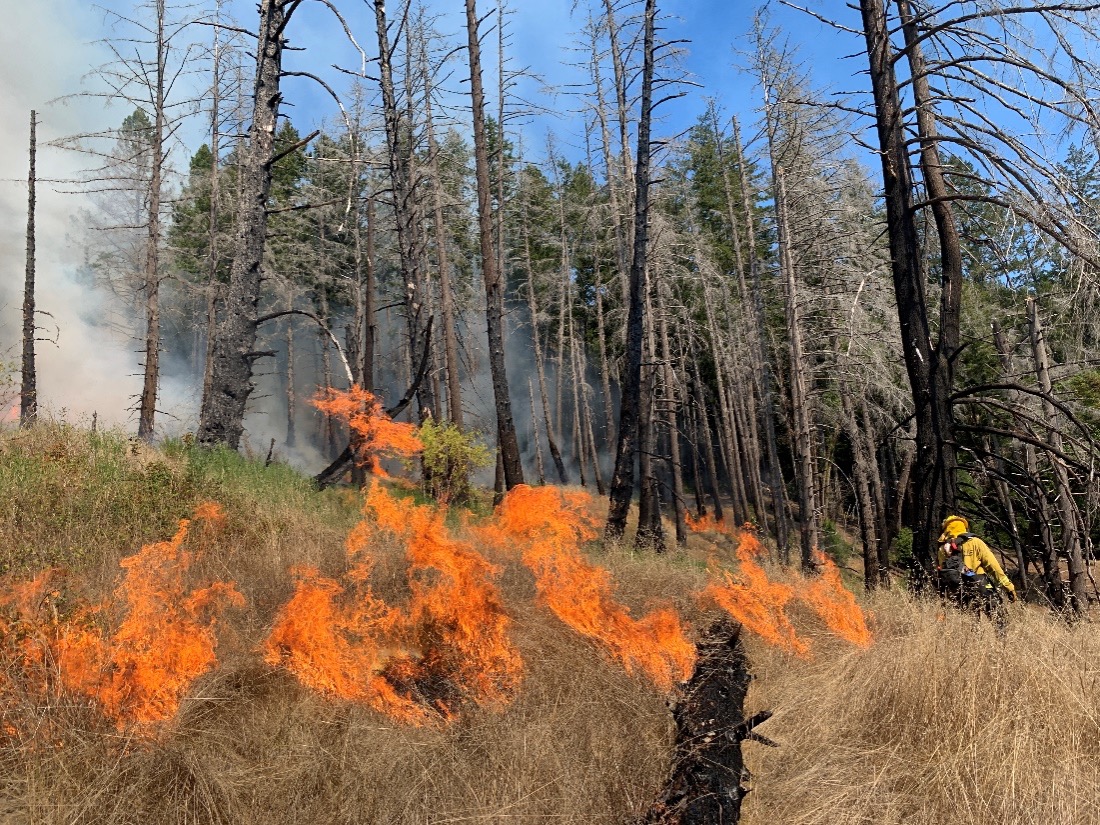
Figure 12 Broadcast burn as a prescribed fire activity at Humboldt Redwoods State Park.
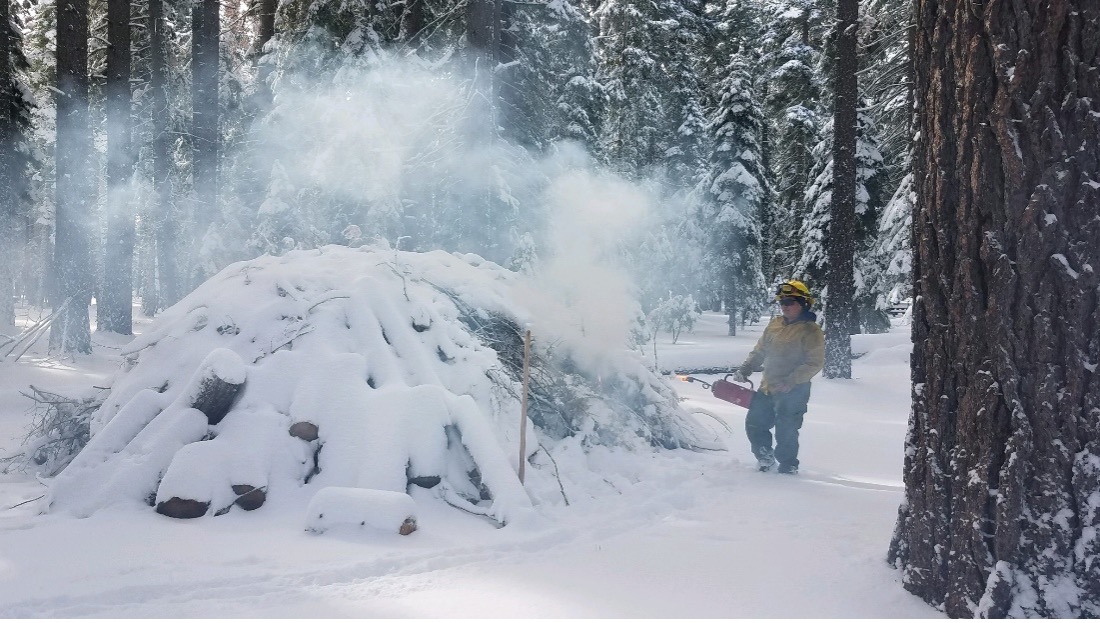
Figure 13 Pile burn as a prescribed fire activity in State Parks Sierra District.
Resilience in Action: State Parks Wildfire and Forest Resilience Program has:
- Partnered with the Native American Conservation Crew at Cuyamaca Ranch State Park to provide local Native American youths on-the-job work experience in fuels management and reforestation work while incorporating cultural education and learning labs.
- Prepared a1,300 acres prescribed burn for the South Grove of Giant Sequoias at Calaveras Big Trees State Park, in coordination with the California Giant Sequoia Coalition. State Parks is coordinating with CAL FIRE, the US Forest Service and the National Park Service for this project and expects to burn in Fall 2023.
- Purchased eleven fire engines and is training additional State Park’s staff to expand State Park’s prescribed burn program.
- Also purchased 12 Burn Boss Air Curtain Burner incinerators, enabling year-round slash pile removal.

Figure 14 Native American Conservation Corps crew at the Cuyamaca Rancho State Park.

Figure 15 Pile burn as a prescribed fire activity in Trione-Annadell State Park.
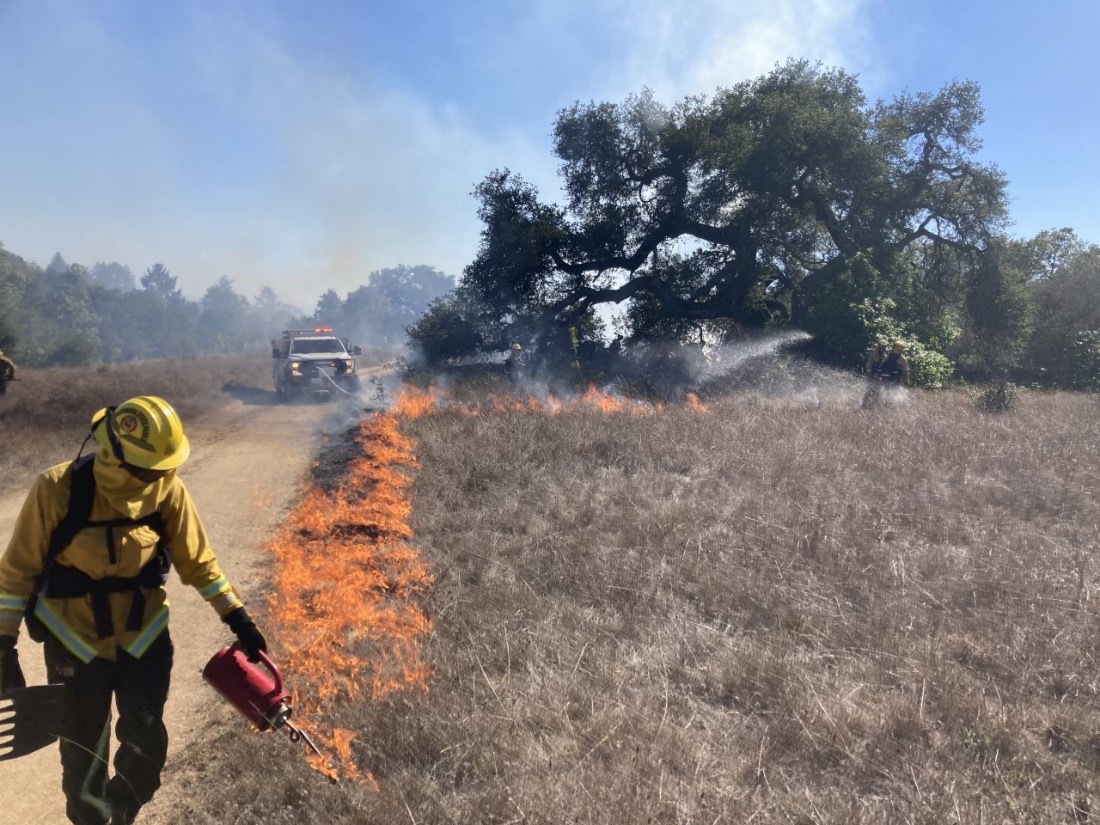
Figure ## Ecological burn at State Parks Santa Cruz District to maintain coastal prairie habitat.
Regional Forest & Fire Capacity
Regional Forest & Fire Capacity
Department: Department of Conservation
Program Description: The Department of Conservation’s Regional Forest and Fire Capacity (RFFC) Program supports local and regional efforts to assess the resilience of their forests and communities, identify forest health and wildfire prevention priorities, build local partner capacity, and develop a pipeline of shovel ready fuels reduction projects. With the passage of AB 9 (Wood/2021) and a sustained increase in funding, DOC has expanded the RFFC Program to nearly all fire-prone regions in California, each developing a long-range strategy for wildfire resilience and a consistent pipeline of high-value projects that can be executed in the next several years.
Most recently, this increased funding has enabled the Regional Forest and Fire Capacity program to award additional block grants to expand further across Los Angeles County in the Upper Los Angeles and San Gabriel Watersheds as well as the Inland Empire in Riverside County. The Department is also working to provide coverage for eastern Sonoma County in the North Bay watershed.
Program Impact: In 2022 the Regional Forest and Fire capacity program increased funding for its 11 block grantees and executing two new block grants for the Los Angeles and San Gabriel River Watersheds and the Inland Empire in Riverside County, in turn supporting more than 100 subgrants and contracts for fire resilience activities, coordinating more than 200 organizations and 500 practitioners, cooperating with or co-managing projects with 30 California Native American Tribes, providing training and workforce development opportunities to nearly 1000 Californians, and accelerating at least 250,000 acres of forest health and fuel reduction projects toward shovel-readiness.
Regional Forest and Fire Capacity Program was able to scale from a phase 1 pilot program in specific areas throughout the State to now cover every fire-prone region in California expanding programs in Lake, Napa, Colusa, Yolo, Solano, Glenn, Tehama, Shasta, Southern Siskiyou, Los Angeles, Riverside, and Orange Counties.
Funds also:
- Developed critical capacity to enable local wildfire resilience partners to scale up their impact to overcome systematic and structural barriers in implementing resilience goals.
- Finalized phase 1 Regional Priority Plans in the California North Coast watersheds, Inland Empire, and the Santa Monica Mountains, and Greater San Diego as well as many other local collaborative planning efforts, producing 367 high priority projects through partnerships with at least 100 local organizations across Southern California.
- Supported the launch of the North Coast Regional Resilience Plan, adaptive prioritization and planning framework, and a pipeline of projects with more than 1000 priority projects in different stages of readiness integrated with a novel project tracking and reporting tool.
- Facilitated block grants to implement Regional Priority Plans in the North Coast, Sierra, Central, and Southern California regions.
- Completed more than 50 scalable demonstration projects, advancing restoration, reforestation, workforce, biomass utilization, mapping, and modelling throughout the state.
- Launched indigenous conservation corps programs in San Diego and Los Angeles Counties.
- Execution of a unique bilateral agreement between the Tahoe Conservancy and Washoe Tribe to coordinate and consult on wildfire and natural resource issues within the greater Tahoe region.
- Expanded a prescribed fire association mentorship and support program, empowering and expanding prescribed fire expertise, resulting in the development of several new prescribed burn associations.
Supported a tribal capacity grant program implemented by the Indigenous Stewardship Network, an indigenous-led non-profit organization that supports the expansion of indigenous-led forest and fire cultural practices. Other activities that have been funded to date and those currently under consideration include:
- Continuing RFFC regional collaboration, planning, and prioritization efforts
- Leveraging RFFC funding with grant applications
- Organizational development to build capacity in the area of forest and fire project development, funding, and implementation
- Development of shovel-ready forest and fire resilience projects
- Expansion of Prescribed and cultural fire training and networks
- Working with the USFS and implementing 3rd party NEPA projects
- Assisting Fire Safe Councils with community protection project identification, prioritization, funding, and implementation
- Developing invasive pest control programs for major pests such as Gold-Spotted Oak Borer beetle
Further activities are planned through 2024.
- Completion of Regional Priority Plans in all regions
- Continued growth of Prescribed Burn Associations and prescribed fire training
- Expansion of shovel ready project development
- Growth of Indigenous Stewardship Network
- Strengthening of formal governance in regions
RESOURCES
Forest Health Grant Program
Forest Health Grant Program
Department: CAL FIRE
Program Description: CAL FIRE’s grant program will continue to support forest health activities throughout the State and now includes dedicated funding for Tribes and post-fire reforestation and regeneration. Focused on implementation acres, treatments include reforestation, prescribed fire, fuels modification, pest management, and biomass utilization.
Program Impact: The Forest Health grant program has invested more than $394 million in 97 multi-landowner, landscape scale forest restoration projects. The funds are used for directly implementing forest treatments and have resulted in tens of thousands of acres treated across the state.
Resilience in Action: The San Mateo County Forest Health project involves forest fuels reduction treatments across approximately 445 acres at two county parks and Camp Butano Creek, a property owned and managed by the Girl Scouts of Northern California. The forests in these parks have high fuel loads, rugged, inaccessible topography, and have experiences years of extreme drought, threatening nearby isolated mountain communities that have limited evacuation routes. The removal of brush, dense vegetation, and diseased trees throughout the project area is intended to improve growing conditions and resilience to drought, disease, and wildfire for the remaining forest.

